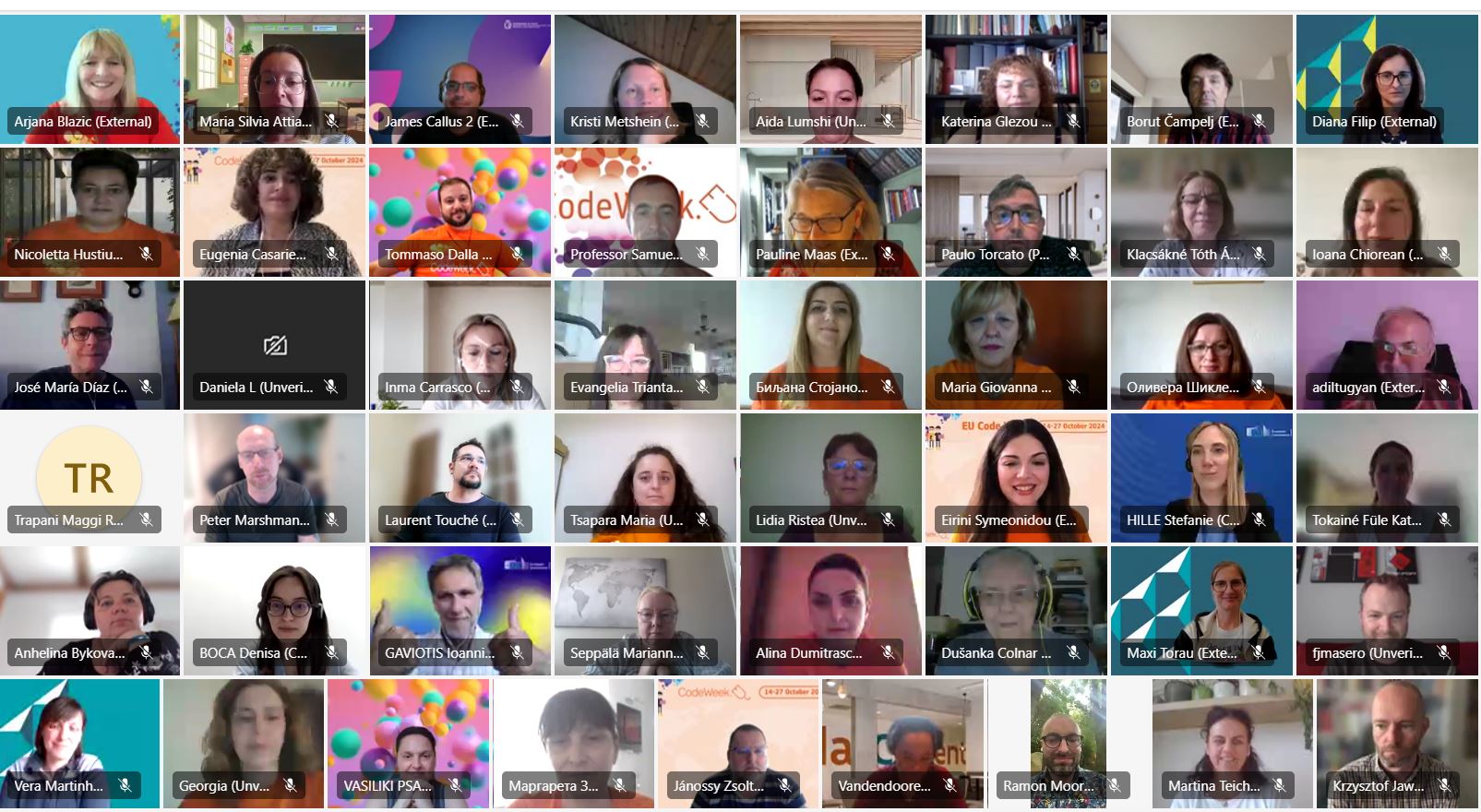A STEM activity
Publication date: January 12, 2023
By Stamatis Papadakis, Code Week Ambassador Greece
To celebrate EU CODE WEEK, I prepared a STEM activity for the 1st-grade High School Students from the 5th General Lyceum of Heraklion, Crete, Greece.
In the described practice, we make an attempt to create a mobile weather forecast application (app) for smart mobile devices, with the Android operating system. Educational material from the Photodentro was used (Photodentro Repositories), as well as a variety of educational and non-digital material freely available on the internet (ebooks, tutorials, APIs, graphic files, etc.). This can be considered a teaching intervention implemented and oriented to “stimulate” pupils’ interest in programming, as it combines the teaching of a “demanding” subject (advanced programming concepts) with learning concepts of Sciences, Technology, Engineering and Mathematics (STEM), through the creation of a mobile application for weather forecasting, as previously mentioned .
For this practice were used:
- the MIT App Inventor programming environment from the Massachusetts Institute of Technology (MIT)
- the weather forecast service OpenWeatherMap, which allows the retrieval of weather information through a free API (Application Programming Interface),
- the AppInventor.org website for using free educational materials
- the icon archive website for the use of multimedia elements
- the Panhellenic Repository of Open Educational Practices for Primary and Secondary Education (Photodentro) for finding open Educational Practices, and the Aesop platform
Figure 1 – Application GUI

Figure 2 – Freely available data via the OpenWeatherMap weather service API

Figure 3 – Mobile application GPS management code

Figure 4 – Code for storing geographic coordinates

My most important observation as a teacher is that the students found the App Inventor environment and the general idea of mobile app development exciting. The immediate visual feedback provided by the App Inventor on their smart mobile devices or simulators was the first element that made a positive impression on the pupils picking their sensory curiosity and sparking their interest.
Essential advantages of the programming environment were its ease of use, the playful environment, the visualization of structures and commands, and the immediate compilation and execution of programs. The puzzle-like shape of the blocks, their colour separation and the ease of compiling, with the main feature being that it was impossible to make syntactical mistakes (but not excluding logical ones), allowed the pupils to place the commands in the correct series quickly. As a lesson learnt we can say that their time was more productive in focusing on the learning process than learning the environment interface, thus, they could focus more on learning the procedural knowledge of the various structures, rather than the declarative knowledge of their syntax.
As a result, pupils could use all the programming concepts they were taught in the projects they implemented and as a result their motivation to complete the examples was significantly enhanced. Overall, the majority of pupils not only looked for the activity’s execution, but also the environment “exploration”, trying to modify the code in the context of their experimentation with App Inventor.
The general classroom climate was conducive to active, collaborative learning.

